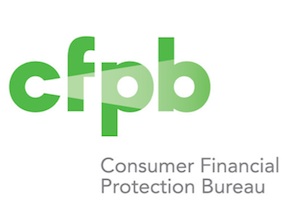Around 11:45 pm, on a Friday night in 2011, Jay Leno gave me a fit of giggles as he mocked Bank of America’s plans to charge consumers a monthly debit card fee of $5, in his classic late night television series, ‘The Tonight Show’.
The episode remained etched in my memory for it is seldom that the banking industry becomes the subject of satire in a late night television show.
The report released on June 11th, Tuesday by the Consumer Financial Protection Bureau (CFPB) reaffirmed the satire. The regulatory body is gearing up again to criticize the US banking industry for charging overdraft fees that generated close to $32 billion in revenue, in the US alone.
The rigmarole around overdraft fees is not new. It repeats itself every year, and every once in a while the regulators decide they must pull up their socks and attack the banking industry in the interest of the public. Fair enough and good cause, perhaps, if one could be sure that these efforts would lead to constructive outcomes.
The Dodd Frank financial overhaul law in 2010 created the Consumer Financial Protection Bureau to act as an advocate of consumer interests. Back then, the Fed required banks to give consumers the right to opt-in to overdraft protection for debit card purchases. This came to be called Regulation E. At the same time, the Credit Card Accountability, Responsibility and Disclosure Act required that consumers opt-in to the services. Nevertheless, by the end of 2011, 16% of all consumers had enrolled in overdraft protection plans, and 22% of new account holders opted-in to the plans. That was a surprise to those who thought consumers wouldn’t want to opt in.
Despite the relatively low opt-in rates, overdraft and non sufficient fund fees, these fees made up 61% of banks’ total consumer deposit service charges in 2011.
While one could certainly question some of the practices the banks take with overdraft charges, the banking industry is struggling to turn around its P&L accounts amid the recovery from the 2009 financial crisis. In the absence of this revenue source, $32 billion as I said, banks will be compelled to take to other measures for increasing their revenue which may result in higher annual fees. In the absence of overdraft fees, consumers might have to pay fees for returned checks, late fees and it could eventually affect their credit reports.
And these fees aren’t all bad. The overdraft service acts as a short-term loan for consumers and is a convenient way to raise cash quickly. According to Richard Hunt, President and Chief Executive of the Consumer Bankers Association, “New rules by CFPB could push some consumers to use unregulated industries with riskier and costlier alternatives such as payday lenders, check cashers or pawn shops”.
The probe into overdraft fees could prove costly for small banks in particular, that consider this an important source of revenue growth. Over the years, charges have seen a shift with 12% of banks charging less than $20 per overdraft. This is up from 7.4% in 2008 and 1.3% from 2011. Bank of America and Wells Fargo are the exception in this case and charge $35 for every over drawn item.
Richard Cordray, CFPB’s Director, clarified in a conference call that the agency is not out to ban the product entirely, but to deal with numerous concerns with industry practices. “What is marketed as overdraft protection can in some instances, put consumers at greater risk of harm”, he said.
An aspect that has attracted private class action litigation and regulatory actions, also raised by CFPB, is the question of when charges are posted to the accounts. Some banks post ATM, debit and check transactions in the order they happen and some put them at the top of a day’s transactions that allows them to subject more transactions to overdraft fees.
In its report, CFPB continues to argue for daily caps on the number of transactions that become eligible for overdraft protection and hopes to bring uniformity to overdraft protections. However, similar attempts like the review of overdraft practices in February 2012 and the introduction of legislation in May 2012 have only rubbed the surface of overdraft fees without outlining uniform ground rules for the banks to follow.
Overdraft fees, given their nature and impact, will always invite the ire of consumers and regulators alike but with a slow recovery and low interest rates, what is the alternative source of revenue generation for banks? Cracking down on banks for overdraft fees is justifiable provided the alternative path is clearly defined and really makes consumers better off.

